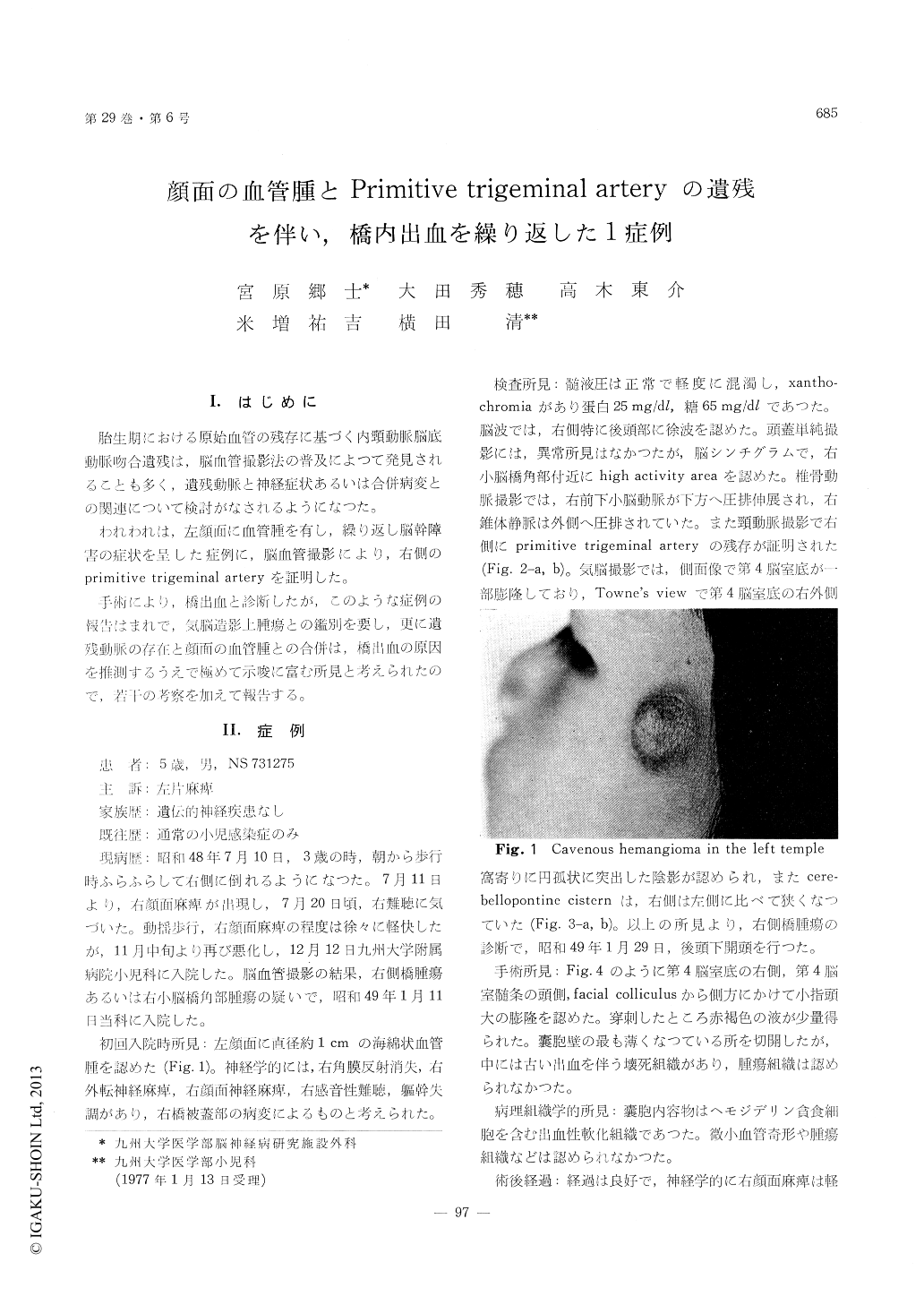Japanese
English
- 有料閲覧
- Abstract 文献概要
- 1ページ目 Look Inside
I.はじめに
胎生期における原始血管の残存に基づく内頸動脈脳底動脈吻合遺残は,脳血管撮影法の普及によつて発見されることも多く,遺残動脈と神経症状あるいは合併病変との関連について検討がなされるようになつた。
われわれは,左顔面に血管腫を有し,繰り返し脳幹障害の症状を呈した症例に,脳血管撮影により,右側のprimitive trigeminal arteryを証明した.
The authors reported a case with recurrent pon-tine hemorrhage and concomitant facial angiomaand persistent primitive trigeminal artery. Thepatient, a 5-year-old boy, was well until the ageof 3 years when he was first noted to have stag-gering gait which was followed by facial paresisand hearing difficulty on the right. A mass lesionin the mid-pons on the right side was suggestedby brain scan, vertebral angiography and pneumo-encephalography. In addition, a right carotid an-giogram showed a persistent primitive trigeminalartery. No vascular abnormality such as aneurysm,arterio-venous malformation or carvenous angiomawas found in angiograms.
Under the diagnosis of pontine tumor, subocci-pital craniectomy was performed and a hemorrhagicsoftening was found in the right facial colliculusof the pons. The lesion was partially cystic andwas evacuated. No neoplastic or anomalous vasculartissue was found on the histological examinationof the tissue in the cyst.
He did well with a slight residual paresis for oneyear after surgery and then an acute exacerbationoccurred with Foville's alternating facialhemiplegia,dysarthria and dysphagia. No vascular anomalywas disclosed by repeated vertebral angiography.Yet, the findings at the previous operation and thecourse strongly suggested a recurrence of pontinehemorrhage. Neurological symptoms improved andthe patient was discharged with moderate residualalternating hemiparesis.
Reports on cases with persistent primitive trige-minal artery were reviewed with special referenceto associated vascular anomalies, and possible causeof pontine hemorrhage was discussed referring thereports on pontine vascular lesions.
It was presumed that the pontine hemorrhage inthis patient was caused by a vascular anomaly whichmay be related to the persistent primitive trige-minal artery and facial angioma as a neurocutaneousvascular developmental disorder, and the clinicalsignificance of facial angioma was emphasized.

Copyright © 1977, Igaku-Shoin Ltd. All rights reserved.


